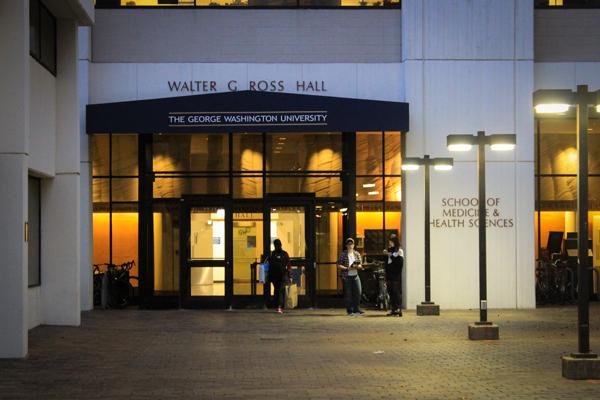The School of Medicine and Health Sciences is staffing up for the third straight year.
There are currently 69 open faculty positions for SMHS and the Medical Faculty Associates posted on GW’s jobs website, a number that continues to increase around this time of year annually. An SMHS spokeswoman said that the annual increase in positions is due to new programs within the school that require the recruitment of new faculty, like the new GW Cancer Center.
There are a total 107 openings in the medical school, making up more than a third of all the open positions at GW. Out of the SMHS openings, three are for administrative positions, 24 are in research and 21 are in medicine school instruction.
SMHS spokeswoman Lisa Anderson said the school has received several large grants that require increased staffing and that clinical departments are continuing to grow. Faculty in the clinical departments are not University employees, but are employed by the GW Medical Faculty Associates – an independent physician group that has an academic partnership with the University and GW Hospital – and teach at the school through a partnership between the two groups.
Medical Faculty Associates will receive a $20 million line of credit from GW after spending three times their revenue for the past two fiscal years – which experts said could indicate that the group is expanding.
SMHS launched the GW Kidney Center last year with a $2.5 million grant, and the GW Cancer Center received a $1 million grant in July for a training program to promote health equity and improve communications for patients and providers.
Anderson said SMHS continues to recruit using traditional methods through advertising, print and online versions of academic journals.
“As parts of our diversity and inclusion efforts, we also advertise our faculty openings in publications and with organizations geared towards underrepresented minorities in medicine and science,” she said.
SMHS is known as one of the most selective medical schools in the country and is ranked No. 63 for research by U.S. News & World Report.
Anderson said that SMHS hires faculty members to support strategic initiatives and the recruitment process can take up to a year because the medical school is competing with top schools across the country. She said the school hopes to fill these positions “as soon as possible” but will keep them open until the right candidate is found for each position.
She said that some positions are new but declined to comment on exactly how many are new and how many are preexisting. She added that the school has a low faculty turnover rate of approximately 6 percent per year.
Last year, SMHS and MFA had 61 open faculty positions for a total of 80 open positions, other openings were in administration, research and support staff. In 2014 SMHS and the MFA were attempting to fill 32 open faculty positions.
Robert Golden, the dean of the School of Medicine and Public Health and vice chancellor for medical affairs at the University of Wisconsin-Madison, said he has hired many faculty members in his 11 years as dean. His medical school houses about 1,500 faculty members, and they hire on an ongoing basis, he said.
The hiring process can depend on the size of an institution, turnover in faculty and expansion, Golden said. Most of the faculty recruitment takes place at the departmental level and the search for leadership positions is done through the dean’s office, he said.
“We are constantly searching for new faculty by either expanding opportunities of new programs being launched or replacing someone who has retired or for other reasons,” Golden said. “There is an old expression that I think is true, ‘if you have seen one medical school, you have seen one medical school,’ so it really varies enormously.”
Xiaoyan Zheng, an assistant professor in the department of anatomy and regenerative biology who has worked at SMHS for four years, said in an email that postdoctoral and technician hires can affect research progress, papers and grants.
Eight open postdoctoral positions and one technician position are open in SMHS, according to the jobs website. A new federal law to increase the pay provision for postdoctoral fellows has forced University officials to discuss ways to raise the salaries for 55 postdoctoral fellows.
“For postdoc candidates requiring an H1 visa, it took 9-15 months,” Zheng said. “For a citizen or green card holder, it took several months to half a year.”






